"Sometimes it's not the risk itself you need to worry about. It's what you do to prepare for the risk that does you in." - Futurist Jim Carroll
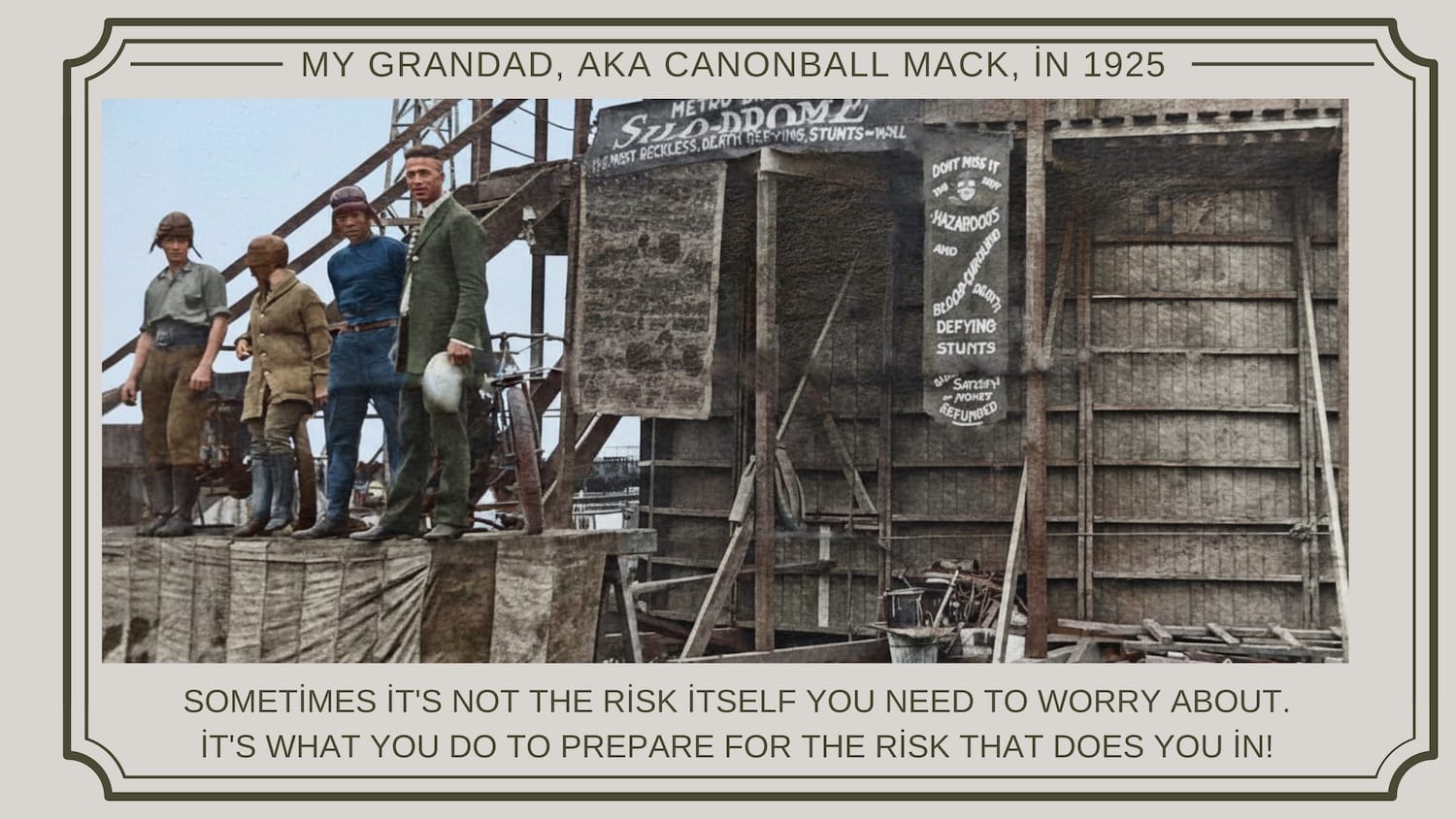
One day, a few years ago learned that my biological grandfather died in 1925 in a stunt-motorcycle accident - on an Indian motorcycle, nonetheless - after he rode his 'show' which was known as the "Wall of Death." Not only that, but his death appears to be due to a malfunction of the front fork of the Indian motorcycle he rode to perform the 'death-defying stunt' - only to have that front fork fail as a result of the modifications that he likely did himself necessary to perform the stunt!
That means, he didn't die from the inherent risk that came from participating in a wildly dangerous carnival stunt - it came from the careful preparation! And so sometimes it's not the risk itself that gets you, but what you've done to prepare for the risk that does you in.
How's that for the opening line to a blog post!
Let's dig in! Today is a good day to share the story - after sharing the story of what I learned about my dad in World War 2, once I obtained his war records, I thought I would once again dig into my history. The essence of the story is this: my biological grandfather on my dad's side, an American citizen, was actually a stunt motorcycle rider - and it cost him his life. I only discovered the whole story and my genetic relatives a few years ago, due to the connective power of DNA tracing.
What follows below is what I found and what my long-lost relative found. Once I had all that information, fed a lot of the news articles and background below to Gemini AI, and then built two slide decks that tell the story. I do this for ultimately sharing with my grandchildren, so that the legacy might live on.
Here's the first, concise version - you can find the PDF here.
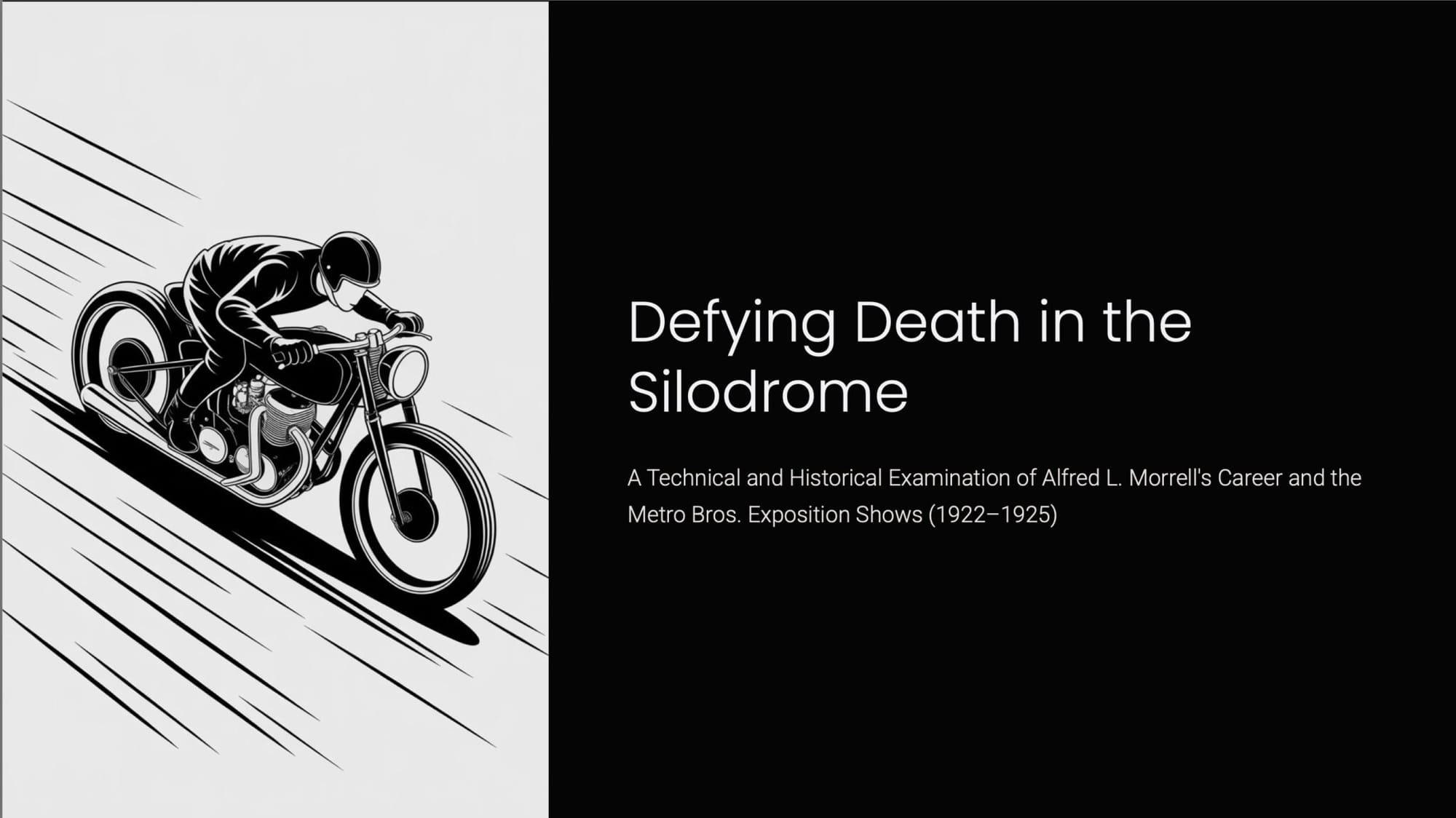
And here's the lengthier one. Both contain a bit of a. technical analysis of what went wrong. The PDF for this one is here.
An interesting angle? The analysis concluded, from its research, that it was likely the modifications to the front fork were what caused his tragic accident:


The backstory? Growing up, I always knew that my original name was not Carroll, but Morrell. I knew my dad lost his dad at the age of 3, and that he was raised by his mom and stepfather. Beyond that, all I ever knew was that he had died in a motorcycle accident. I never knew the circumstances. I knew that his wife, Lucy, remarried and took the name Carroll from her 2nd husband, Edmond, and that they left Connecticut for my homeland in Halifax, Nova Scotia. I didn't know much more than that.
Fast forward to December 2018. My wife and I are on our way to the Mohegan Sun Resort in Connecticut; I had a keynote for a client group at Microsoft. As we are driving in - on some backroads, I must admit, since my wife made an un-admitted error with the GPS - I noticed a sign for the Norwich Golf Club! Much excitement - some years before, I had obtained my dad's war records - he had served in the Canadian military in the Sicily campaign, and later in France and the Netherlands - and had noted the birthplace of Norwich, CT.
Now this was interesting! I remembered in but a moment that one of my younger sisters had just discovered a DNA match with a long-lost relative - in Connecticut - so I gave her a call.
To make a long story short, by the very next morning, I was standing at the grave of my biological grandfather with my long-lost 2nd cousin Ken Keeley of Norwich. He had, some months earlier, taken the time to do all the research that I had never managed to do, such as finding my grandfather's gravestone. He, too, had grown up hearing the mysterious stories of a great-uncle who met an untimely end.

Suffice it to say, there we were! (Albeit, the headstone carries a misspelling.)
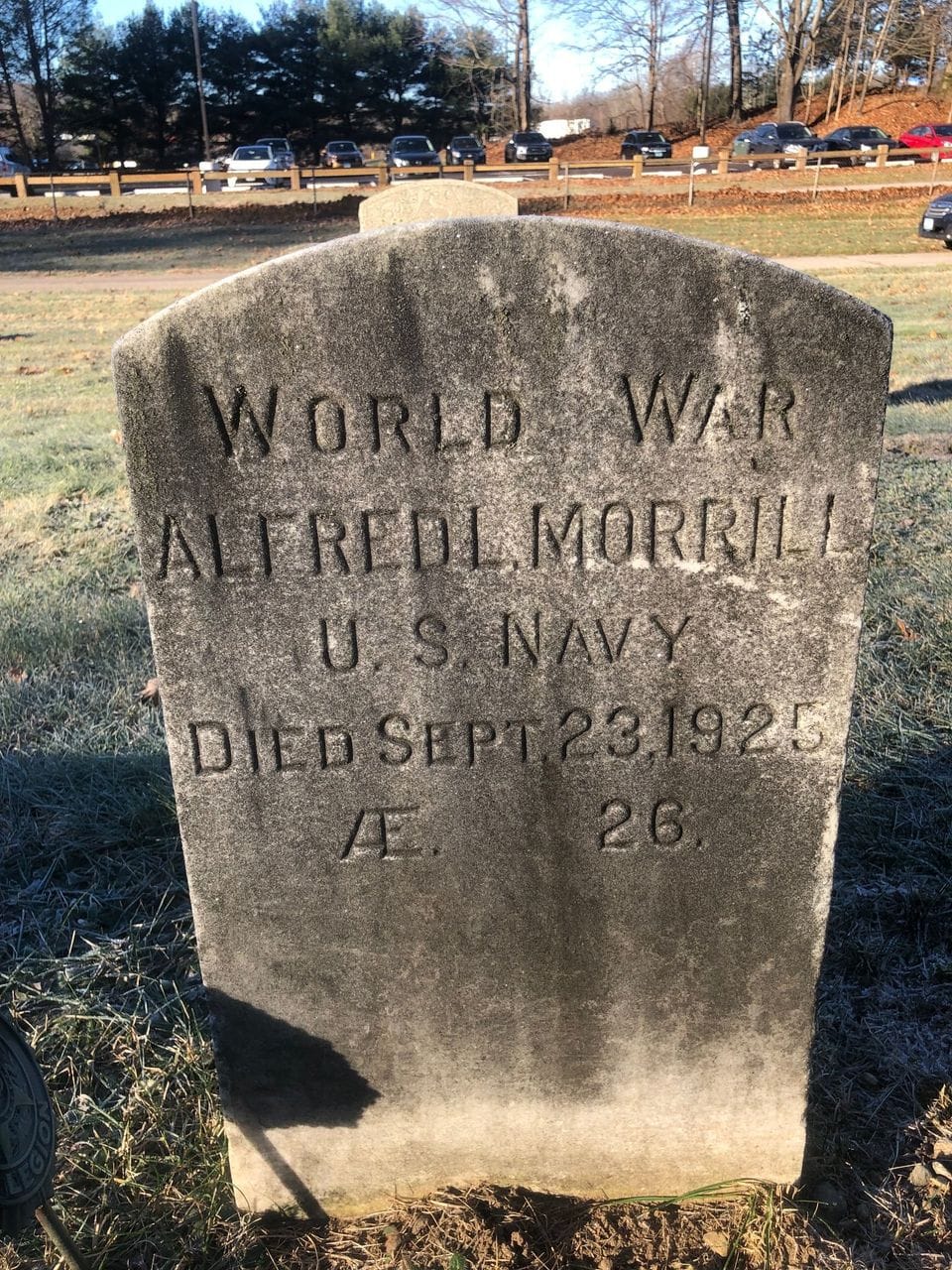
What a story it is! When we met, Ken had unearthed some photos ... including this one of my grandfather at the "Metro Bro's Silo-Drome" which features "The Most Reckless, Death Defying Stunts." My grandad is on the far left.
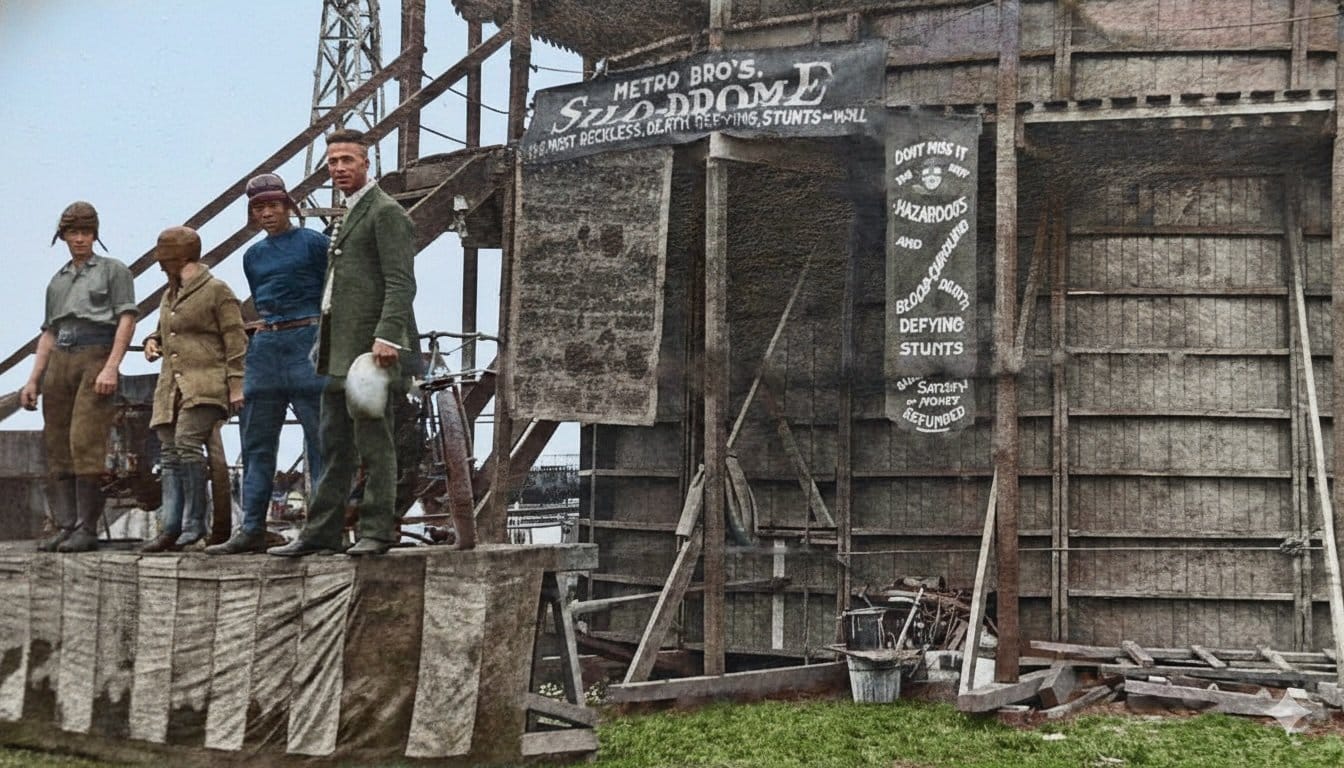
The wording on the Silodrome itself says it all:
"Don't miss it, so hazardous and blood-curdling. Death-defying stunts or satisfactory money refunded."
His appearances were often covered in the media, sometimes referring to his nickname, Freddy. This one appeared in 1922.

Ken has spent a tremendous amount of time documenting my history for my side of the family, including my granddad Alfred and my great-grandfather Octavius.

In addition, he dug out this photo of my grandmother, Lucy Carrol, and Alfred, I presume, shortly before his death. In his image, I can see my own father.

Ken spent countless hours working in Photoshop to restore these images, and I am blessed that we have connected!
Here's where it gets interesting!
I posted this story online originally in 2019, shortly after meeting Ken. And then, in September 2024, I received a message out of the blue with further details! I originally believed for a time that my grandfather actually died in the Silo-drome ("The Ring"), but it turns out it happened as the result of a crash directly after a stunt event. I received an email from a fellow named Alan Mercer, who maintains a site all about the stunt my grandfather was involved in, called "The Vintage Wall of Death." It's a fascinating exploration of what must have been one of history's strangest sports.
He shared with me that his death notice was printed in the Oct 1925 edition of Billboard - yes, the publication about the music, movie, and entertainment industry, as he was actually considered to be an entertainer, going by the name of "CannonBall Mack."

Here's another notice I dug out.
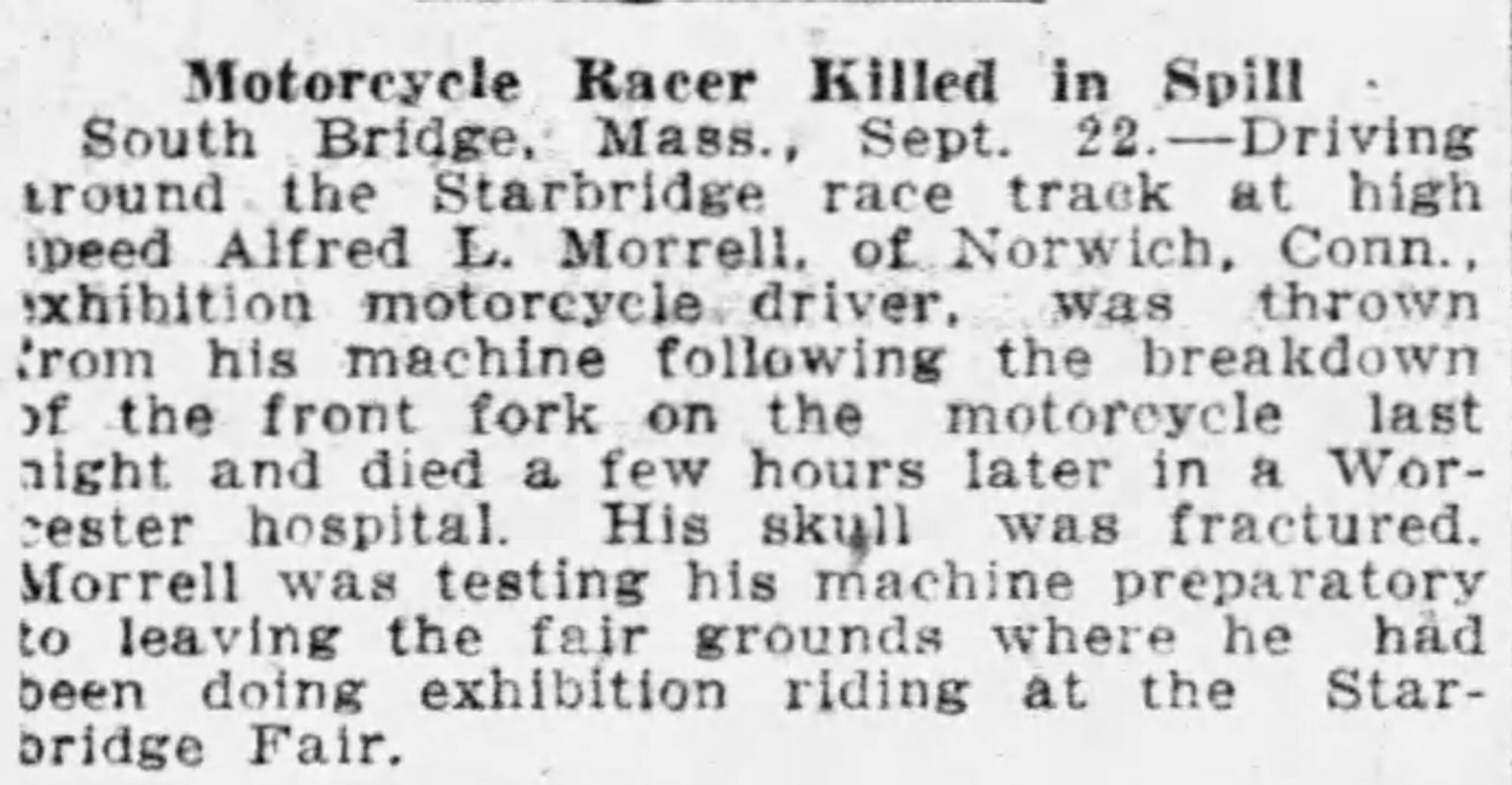
The key thing in this article is that the accident occurred because the front fork failed. The AI analysis above determined that the very modifications to the fork that were necessary to use the "wall of death" are what led to the accident itself!
I dug deeper, and the fascinating thing is that there is a lot of material online about him and the shows he was participating in - here's a notice from the previous month announcing the upcoming shows.
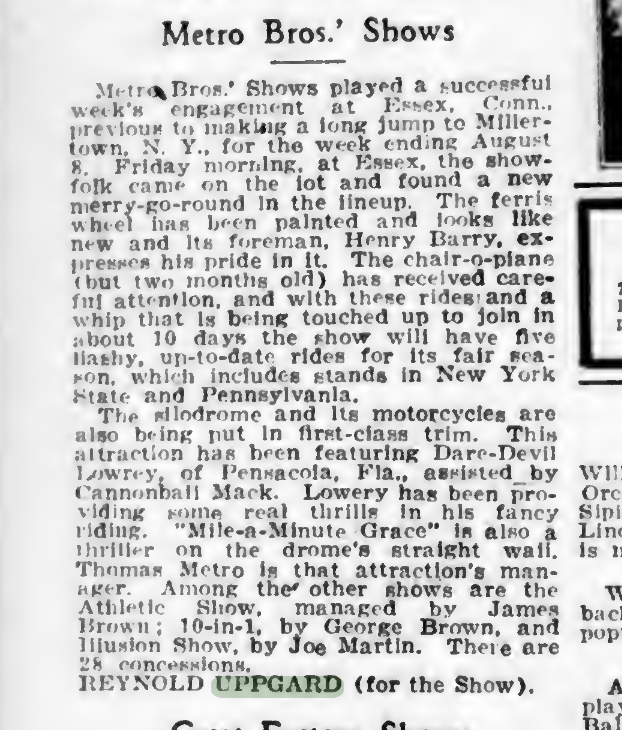
He was known as Cannonball Mack!
Another newspaper notice provides details on his crash
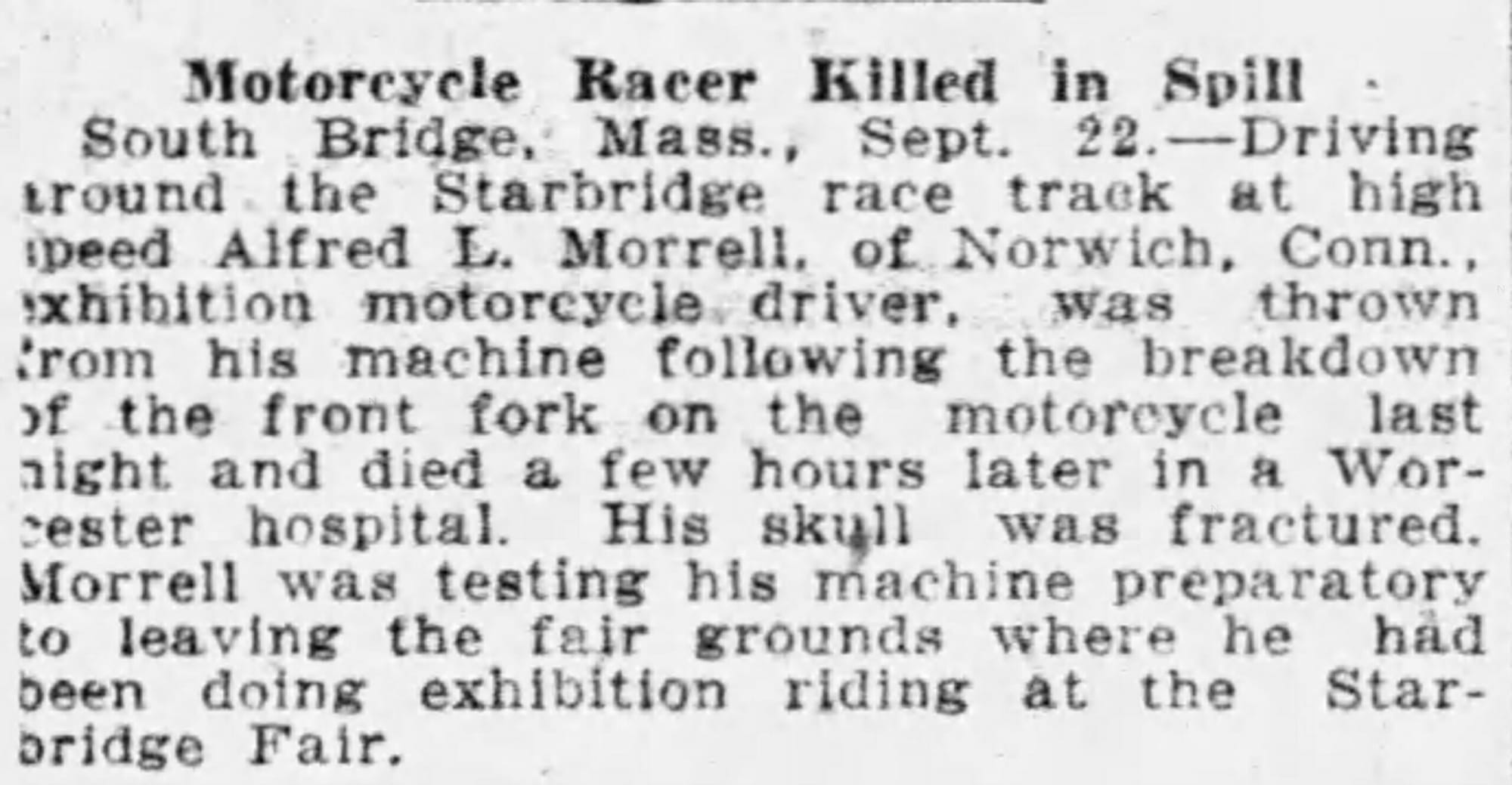
A notice of the midway show provides details on his final appearances. He hung out with Gunboat Jack and Daredevil Dot!
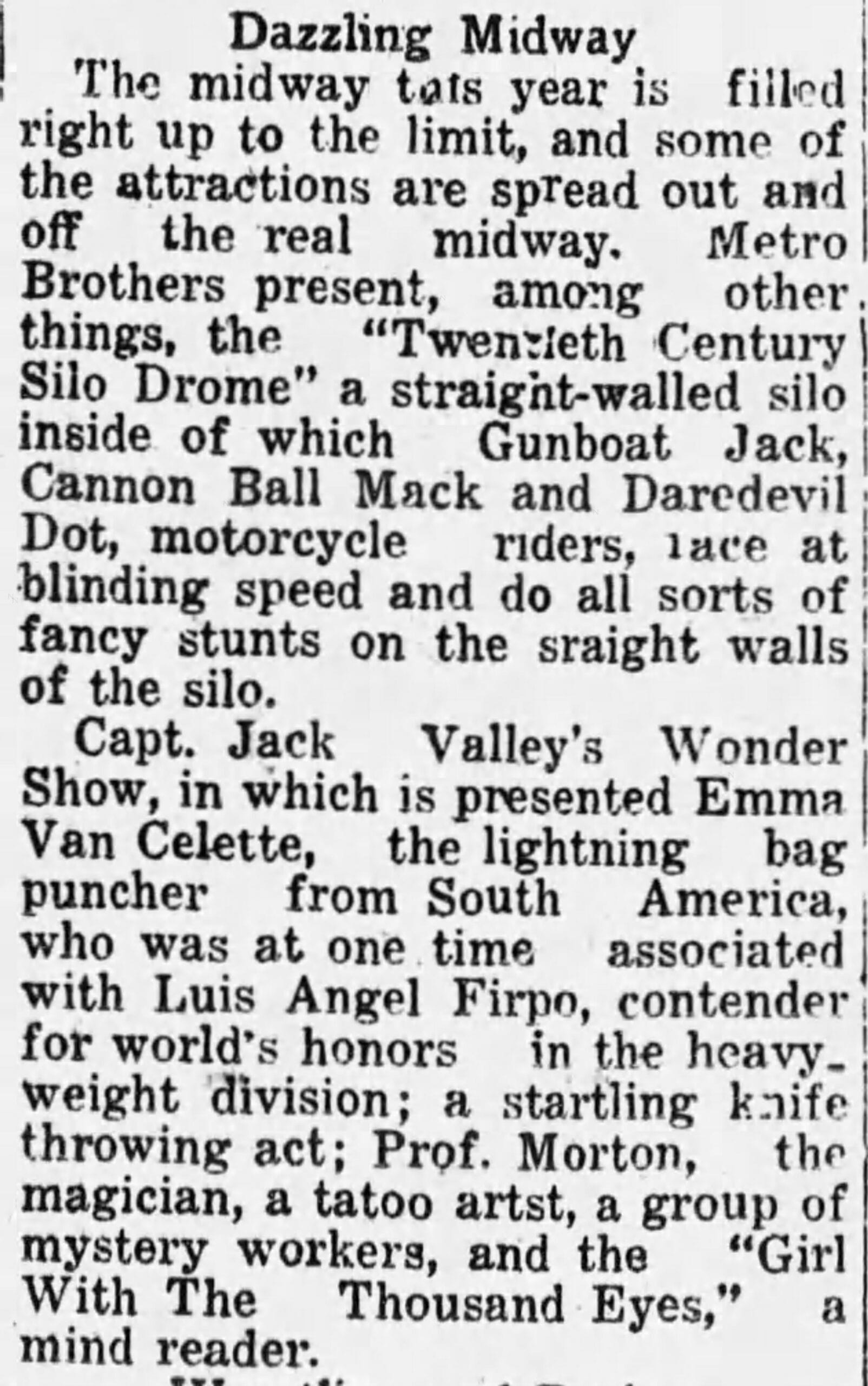
It's fascinating to think of just how interesting and odd a life he lived - this article puts into perspective the nature of the Midway Shows that he travelled in from town to town - as a rider in the Silodrome, also known as the ring of death.
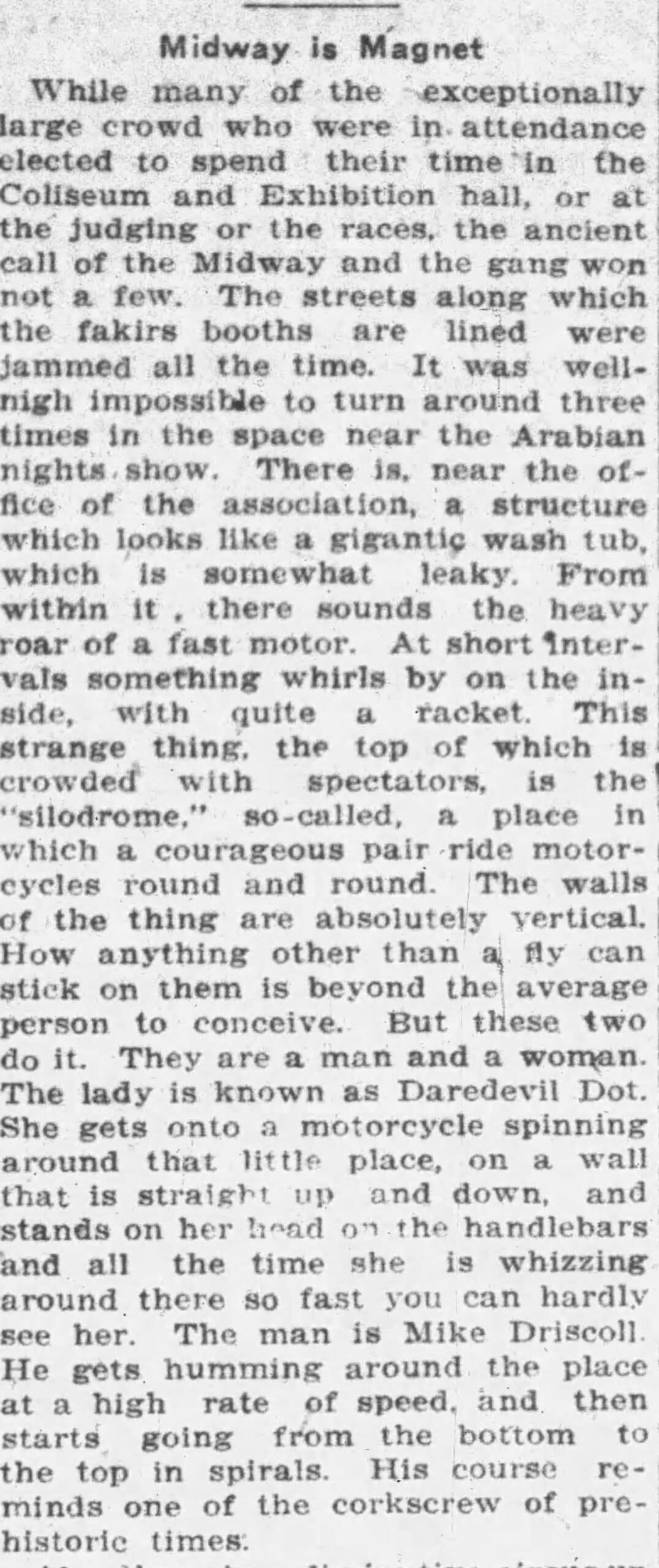
These shows were covered in Billboard Magazine - yes, that Billboard Magazine. And in fact, my grandpa's death was covered in Billboard!
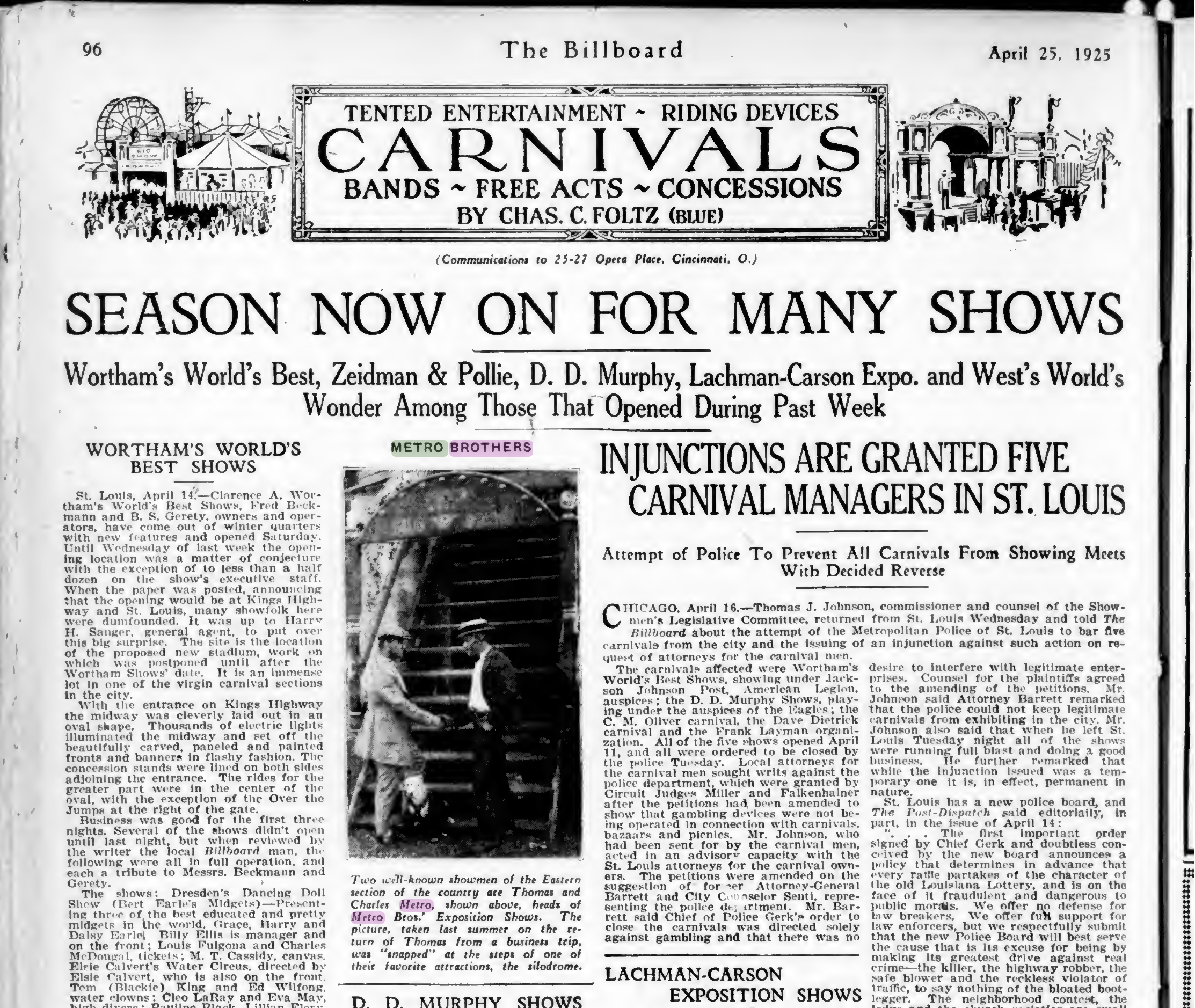
What was the Wall of Death all about? This video puts it into perspective.
https://www.youtube.com/watch?v=f3J5Z6BluRU
The bike on which he crashed? A 1922 Indian Scout, which was also known as "The wall of death machine."
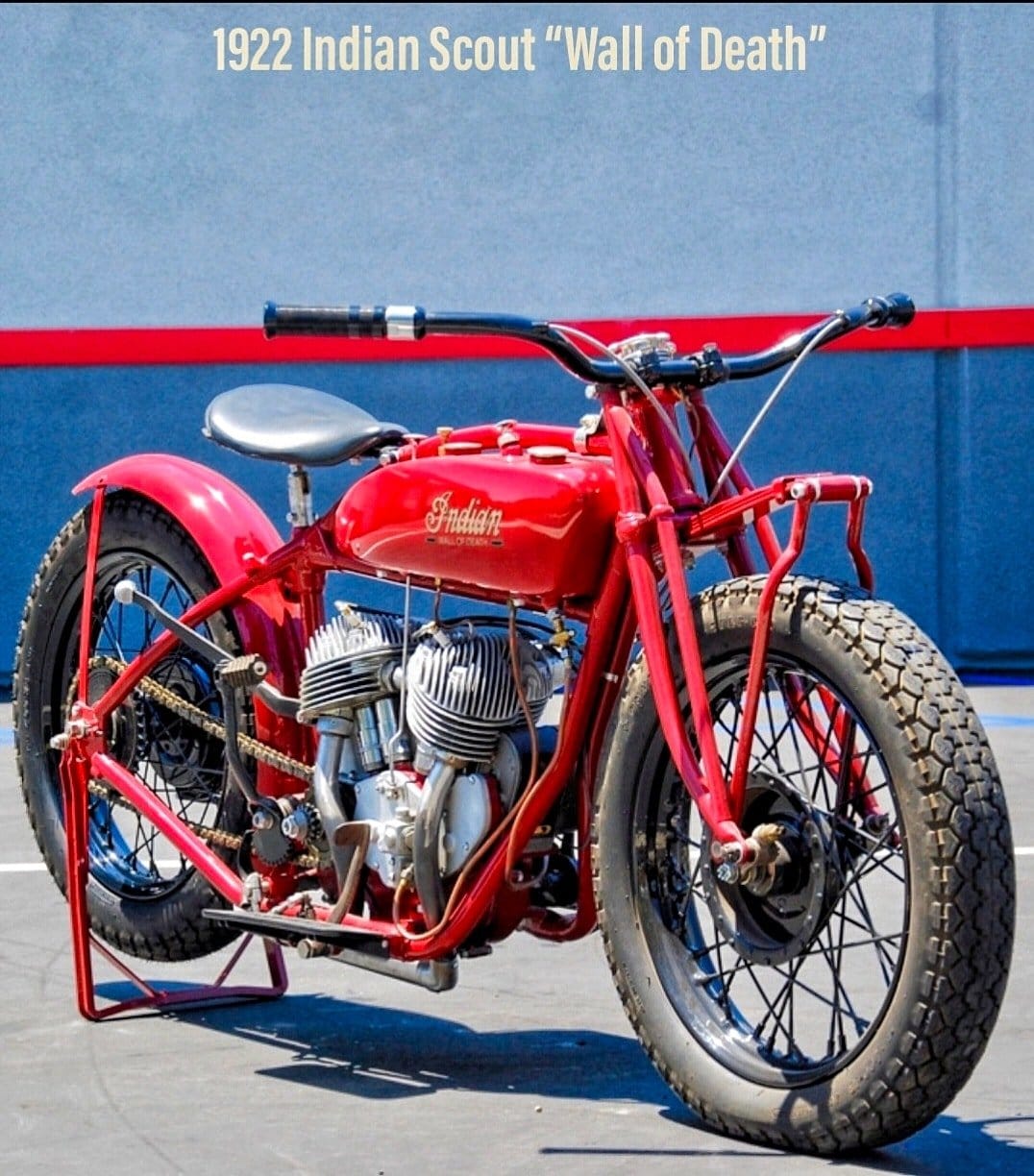
Images are pretty plentiful online of this bike, both as collectible items and as the 'sport' is documented.
The 1922 Indian Scout became an iconic "Wall of Death machine" due to its robust design, superior handling, and reliable V-twin engine, making it a favorite among stunt riders in the dangerous carnival motordromes of the era. The 1922 Scout featured a 606 cc (37 cu in) side-valve V-twin engine known for its power and dependability. This reliability was crucial for stunt performers who depended on their machines in a high-risk environment. The motorcycle was highly regarded for its stability, low center of gravity, and balanced design. These characteristics were essential for navigating the vertical walls of the motordrome, where riders had to maintain enough speed to generate the necessary centrifugal force to stay horizontal. The original Scout model (1920-1927) and its successor, the legendary 101 Scout (1928-1931), were widely adopted by "Wall of Death" (or "silodrome") performers and continue to be used in some vintage shows today, a testament to their enduring toughness and suitability for the stunt.
The "Wall of Death" stunt originated from early 1900s American boardtrack racing (motordromes), with the first vertical-walled "silodromes" appearing around 1915. The show involves riders circling a cylindrical wooden drum at speed, often without helmets, defying gravity as the audience watches from above. The spectacle became a global phenomenon, with Indian Scouts being the preferred machine due to their specific performance characteristics.
But wait, there's more!
Indian Motorcycles, an iconic brand to this day, features details on the bike as well as information bout the 'Wall of Death.'

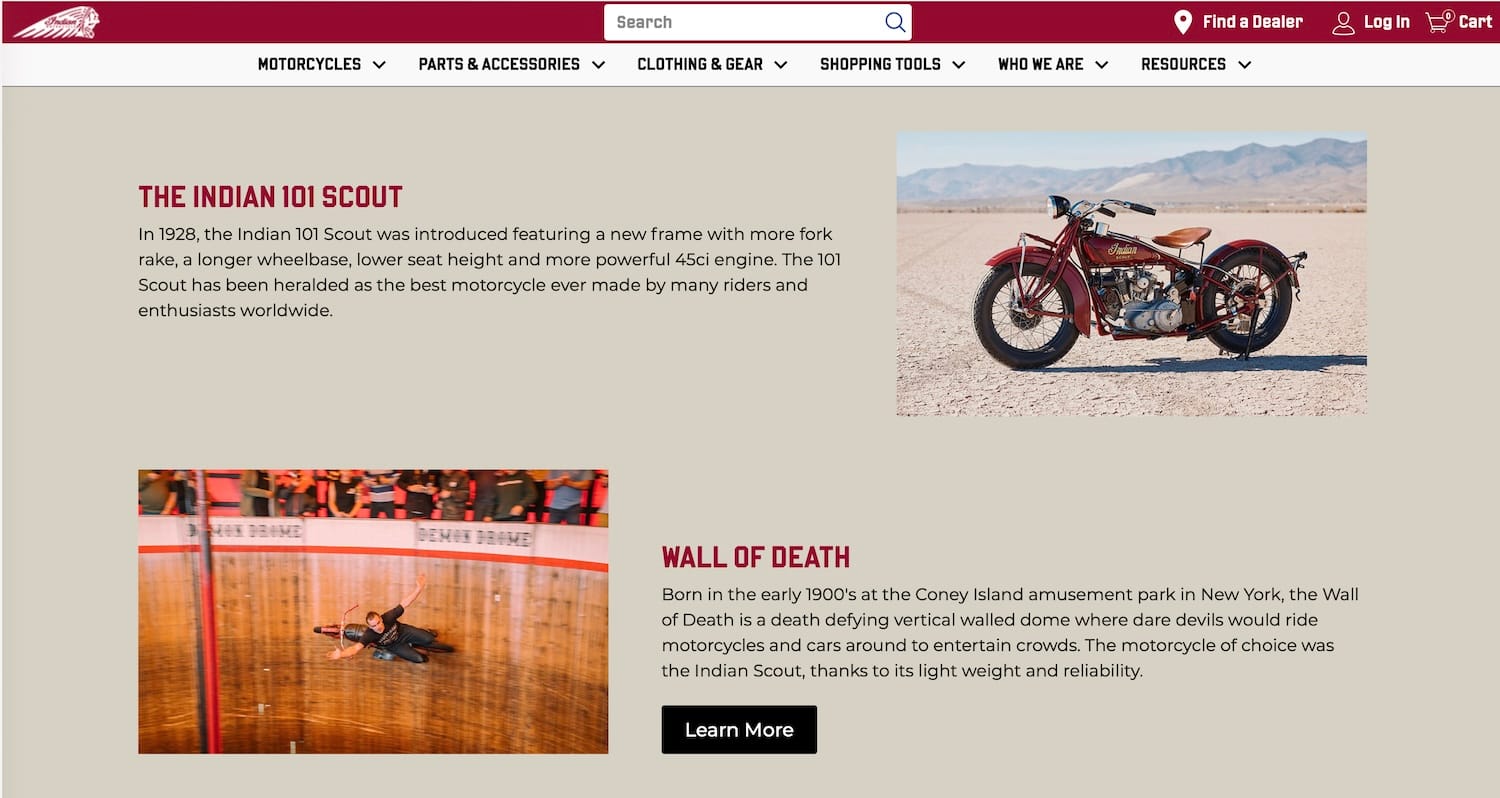
And on that site, they link to the video above.
In a fascinating twist, this is the very bike used by Burt Munro, the 68-year-old New Zealand native Burt Munro who made motorcycle history in 1967 by setting a new official land speed record - 184.087 mph with an unofficial top speed of 205.67 mph—when he raced his heavily modified 1920 Indian Scout Streamliner across the Bonneville Salt Flats in Utah. That record still stands today - and was immortalized in the popular Hollywood film, The World's Fastest Indian, released in 2005.

How risky was it? How big was the 'sport?' Check this YouTube video: "The INSANE History of the Wall of Death." It's pretty surreal to watch!
https://www.youtube.com/watch?v=Frvn1UV-62s
I often wonder if he was somewhere in this video!
Futurist Jim Carroll has never been, fortunately, a big fan of motorcycles.

